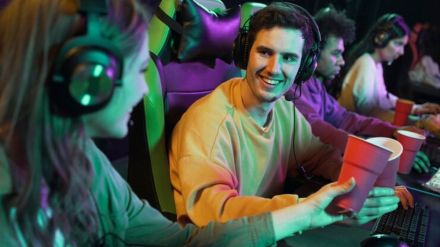The world of online gaming is believed to be fiercely competitive nowadays. It seems to be a high-stakes battle for survival when it comes to capturing and keeping players engaged with platforms. The vast reach of this industry can be assessed from the fact that, in 2023, the global online gaming market generated almost $26.14 billion in revenues. Amidst this situation, game developers and publishers have been locked into a struggle to not only acquire new users but also retain their existing player base.
Expansion of the gaming market
The online gaming market is believed to be a formidable force in media and entertainment segment worldwide. It is considered to be a growing industry as the industry generated $26.14 billion in revenues in 2023. It translates to 9.8% growth compared to the previous year. In India also, the industry displaced filmed entertainment to become fourth largest segment in media and entertainment industry. The robust growth of this segment is also expected to continue through to 2026, where it will become a sector worth Rs 38800 crore, as per a FICCI-EY report published in 2024.
However, with this growth comes fierce competition. The landscape seem to be crowded with many developers. In fact there are over thousands of game developers in India as per a report by Invest India, national investment promotion and facilitation agency. Amidst this situation, the battle for user acquisition and retention has become a multi-faced war which seem to involve advertising and marketing campaigns, innovative gameplay features and data driven strategies.
Acquisition: More than just a click
Amidst the sea of users, acquiring an user isn’t a easy task. Nowadays gaming companies have been deploying a mix of influencer partnerships, targeted advertising and viral marketing alongside traditional advertising to attract new users. It is believed that user acquisition policy varies depending on the type and nature of the game. For example, real money games like Dream11 or My11Circle has collaborated with cricket superstars like Rohit Sharma, Sourav Ganguly and Shubman Gill among others. But on the other hand, many online games have partnered with social media influencers and gamers to bring new users on their platforms.
Not to mention, gamers use variety of tactics at the time of streaming. It becomes a key reason behind the rise of games like Free Fire, BGMI. As per the FICCI-EY data, Free Fire and BGMI were two top-ranked games from a monetisation perspective in India in 2023. “Influencers and game publishers have a vast audience of subscribers, allowing game information to reach new and diverse audiences. Streamers curate authentic, user-generated, and relatable content that resonates with players, significantly impacting player perceptions and purchasing decisions. This helps in fostering top-of-mind recall for the game, builds brand love, and sustains daily users. Gradually, this approach increases the player base and ultimately creates a dedicated gaming community that engages with everything associated with the game,” Kashyap Reddy, CEO, co-founder, Hitwicket told BrandWagon Online
Retaintion: Keeping the player hooked
The real challenge seem to begin once users have been onboarded. Personalisation and ongoing engagements are believed to be critical components of effective retention strategies. For example, games like Clas of Clans, Fortnite have been regularly introducing new content, seasonal events and in-game rewards to keep player base engaged and hooked. Apart from this strategy, gamification elements also play key role in this case. Features like daily login bonus, achievement systems and progression rewards are strategies which are considered to maintain player interest, contributing to its longevity and ongoing revenue generation.
Future of user acquisition and retention
It is believed that, as the online gaming industry will only continue to evolve, the battle for user acquisition and retention will become more intense. Increased integration of artificial intelligence, more personalised gaming experience and novel approaches to engagement are likely to transform the industry in future.
